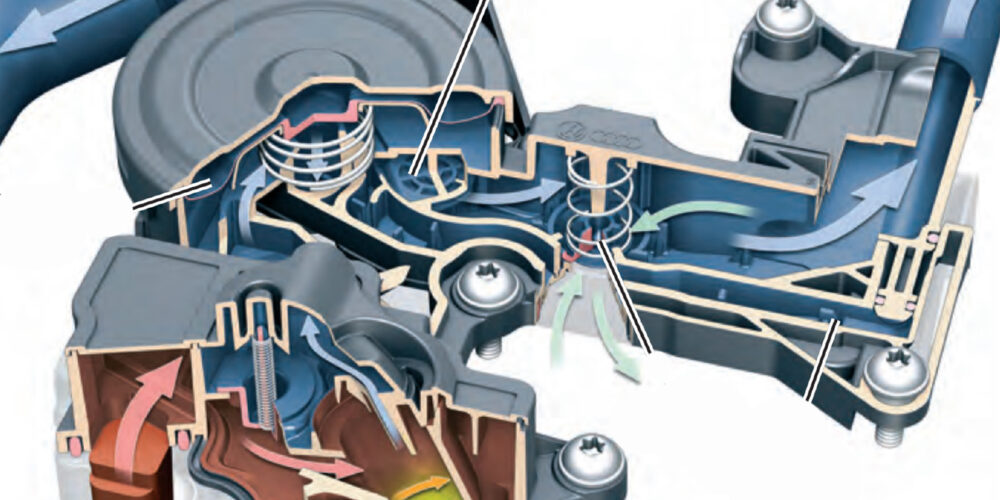From the Identifix Direct-Hit Hotline Archives
Customer Concern: The A/C is not working. No power to the A/C clutch. The A/C compressor clutch does not engage. Manual climate control.
Vehicle Applications: 2000 Volkswagen Beetle 2.0L, GAS, Eng Des AEG; 2000 Volkswagen Jetta GL 2.0L; and 2003 Volkswagen Jetta GLS 2.0L, Eng Cfg L4, Eng Des AVH
Tests/Procedures:
Test Fan Control (FC) module inputs as follows:
1. All tests are performed with the ignition key and A/C switched on and the connecters connected to the fan module. The fan control module is located under the radiator and has two connectors: a 14-pin and a 4-pin.
2. Verify approximately 35% duty cycle from the A/C pressure sensor at pin T14/2 (white) with the ignition on but the compressor not running (duty cycle will increase as the high-side pressure increases). A duty cycle above 90 or below 20 will command the compressor off and would indicate a faulty pressure sensor if the compressor is not running and the refrigerant levels are normal. This is a ground-side duty cycle. If the meter is hooked to ground, expect to see 70%.
3. Verify the presence of an 11-volt reference voltage at pin T14/3 (green). The powertrain control module (PCM) will ground this reference to request a compressor shutdown for a wide open throttle (WOT) condition or lack of throttle basic setting. Eleven volts is the normal expected reading at this pin.
4. Verify 12 volts to pin T14/4 (red/gray) via fuse 16, at all times.
5. Verify good ground to pin T14/6 (brown/black).
6. When the A/C is switched on and the blower motor is running at any speed, verify that 12 volts from the A/C switch in the instrument panel is available to pin T14/8 (blue/red). Note: The cooling fans should run at low speed whenever the A/C is switched on.
7. Verify 12 volts to pin T14/9 (black/blue), when the ignition is in the on position.
8. Verify the presence of an 11-volt reference at pin T14/13 (purple/yellow). The instrument cluster will ground this reference to request a compressor shutdown for an overheat condition. The cooling fans will also be running on high speed.
9. Disconnect the 14-pin connector. Using a fused 12-volt jumper, apply power to pin T14/10 (green/black). The compressor clutch should engage. If the compressor does not engage, check for wiring harness open circuit or loss of ground at the compressor. Reconnect the 14-pin connector.
10. Disconnect the 14-pin connector and verify continuity between pin T14/14 (green/blue) and T14/5 (blue/red). This checks the ambient temperature switch (ATS) (normal open circuit below 32° F, continuity above 32° F).
11. Check for 12 volts to pin T4a/1 (red/black) and T4a/3 (red) via fuses S164 and S180 respectively, in the fuse box on top of the battery, at all times.
12. If all tests pass, the fan control module is faulty and must be replaced.
Potential Causes: Malfunctioning A/C switch, air conditioner high pressure sensor, defective fan
control module, ground, power and/or throttle basic settings.
Note: Pin T14/3 will be grounded by the PCM if the throttle basic settings are lost. If a ground condition exists on pin 3, perform a throttle basic setting procedure and recheck for correct voltage. If needed, a repair kit is available from Volkswagen to replace the 14-pin fan control module connector, P/N 6X09737717 KIT.
Courtesy of Identifix, Inc.










